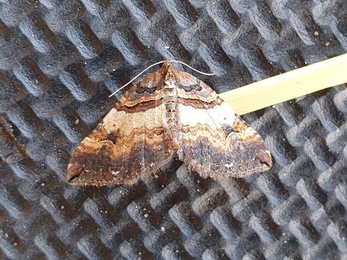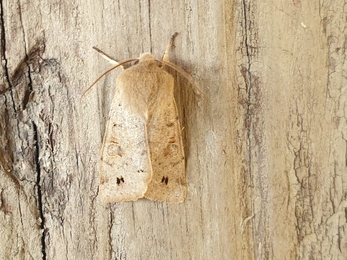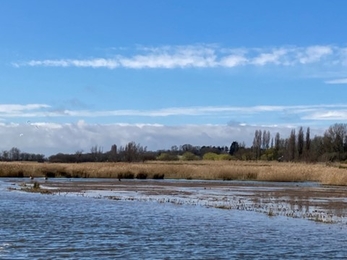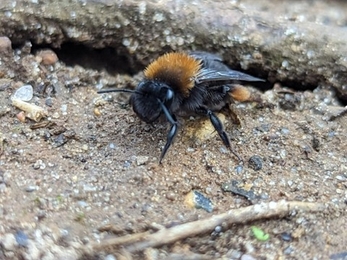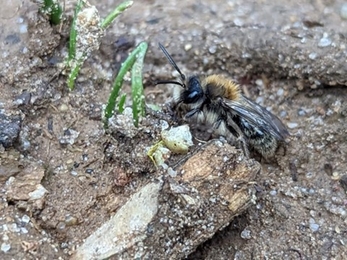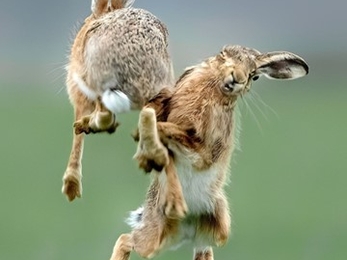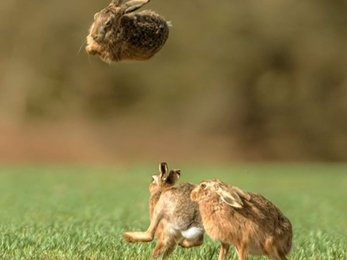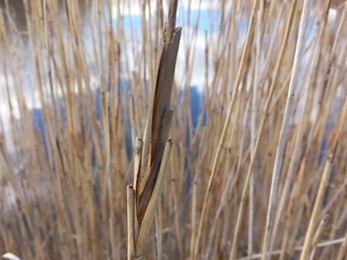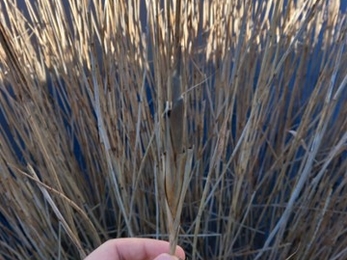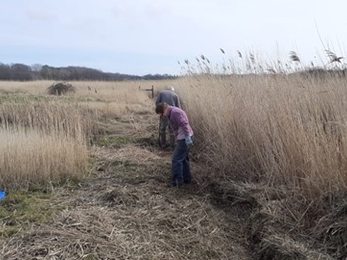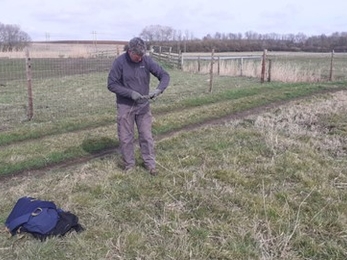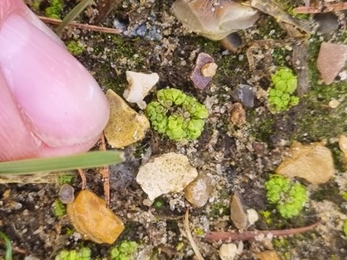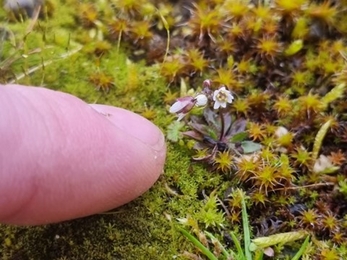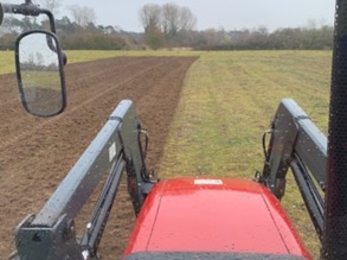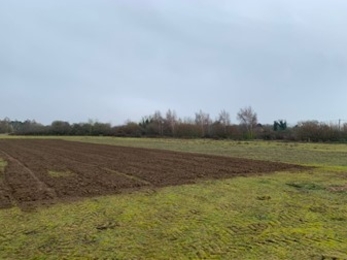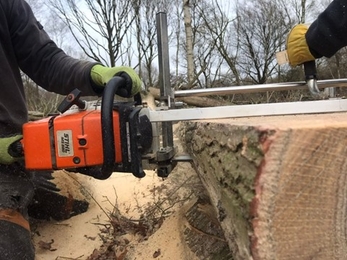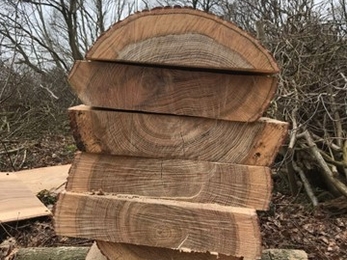Wild news from our reserves – 31st March 2023
Credit Lindsey Gray
Across the county over the past couple of weeks, we’ve had reports of people hearing their first singing chiff chaffs of the year. It’s always a joy, and a seasonal marker, to hear these spring migrants arrive back to the UK and begin announcing their territories with their familiar ‘chiff-chaff’ song. Increasingly, we see higher numbers over-wintering in the UK as the climate changes.
Warden Jamie Smith recorded his first encounter at Church Farm Marshes...
Chiff chaff singing at Church Farm Marshes, Jamie Smith
Jamie and the team at Church Farm were excited to spot a black redstart at Church Farm, feeding around the edges of the dry grassland fields. Black redstarts are migratory species, often seen on passage through Suffolk in the spring and Autumn. Around 100 pairs breed in the UK and it’s always a treat to see them.
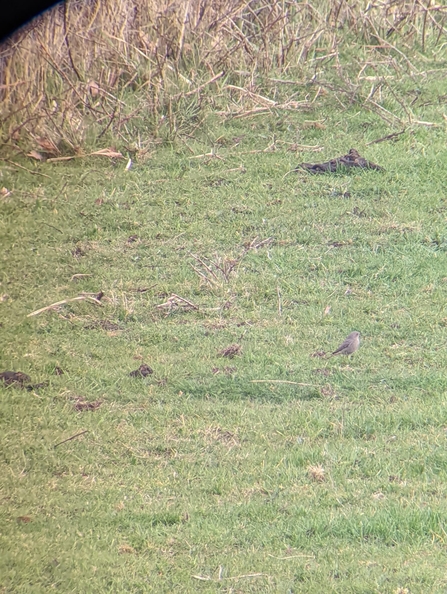
Black redstart, Church Farm, Jamie Smith
Moth-lovers across the county are starting to fire up their moth traps to see what’s about. Dan Doughty found these two lovely moths at Church Farm this week, a twin-spotted Quaker and Shoulder Stripe.
The frogs, too, have been busy, laying a mass of frogspawn. Have you seen frogspawn where you are yet?
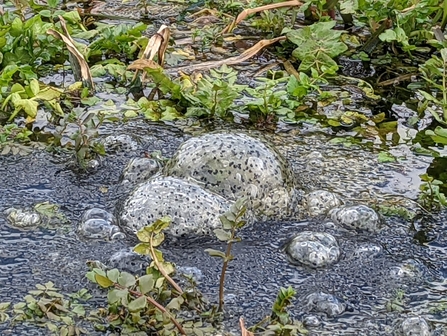
Frogspawn at Church Farm, Jamie Smith
Dingle Marshes
Jamie has also been dropping the water levels at Dingle Marshes. He’s hoping to get the balance of water and muddy edges just right at the start of the breeding season. The lapwings are already displaying, with their gorgeous robotic-like calls.
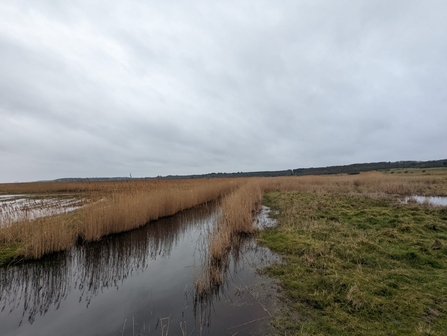
Dingle Marshes, Jamie Smith
Reydon Woods
Spring is announcing itself loud and clear at Reydon Woods! Primrose, lords and ladies, lesser celandine and dog violet are all coming out as the soil begins to warm and sunnier days arrive.
This year’s coppice coupe is now finished at the wood with double muntjac protection! Deer can browse the newly generating growth after the trees are coppiced and can kill the tree, so we need to ensure that they are barred from entering the coupe until the growth is strong enough to withstand browsing. A big thank you to all our volunteers for their hard work and effort in getting to this point. Opening up the woodland floor brings warmth and sunshine, allowing woodland plants and associated insects to flourish.
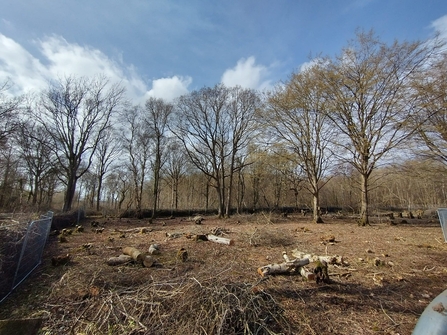
Coppice coupe at Reydon Woods, Jamie Smith
Carlton, Castle and Oulton Marshes
We had a very welcome visitor to one of the mink traps at Carlton Marshes – a water vole, who was quickly released back to the marshes. We have automatic sensors on the mink traps which alert the team as soon as an animal enters it, meaning they are not in there for long. American mink are small enough to fit down the water vole’s burrows, and have been disastrous for water vole populations. At this time of year, mink are moving about more as we are in the breeding window, so if you do see an American mink while on walks (see photo below taken by Matt Gooch) please report your sighting to Waterlife Recovery East:
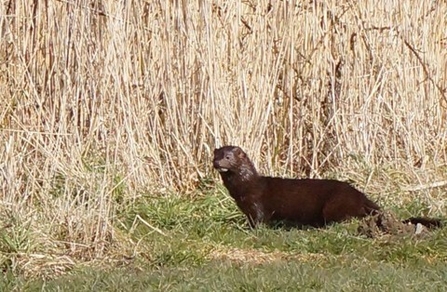
Credit Matt Gooch.
Wardens Lewis Yates and Gavin Durrant have been putting the finishing touches to the livestock fencing ready for the return of the conservation grazing cattle at Castle Marshes, Oulton Marshes and Carlton Marshes in April. It’s a job that we need to do every year, as the cattle always like to rub a gate over-enthusiastically or break a fence thinking that the grass is greener on the other side!
While there, they spotted their first sighting of a common lizard for this year so far. The warmer days are encouraging them to re-emerge after a long winter of dormancy. They also found a distinctive beetle – Oieceoptoma thoracicum – usually seen between April and September with both the adults and the larva feeding on other insects in dung and carrion.
Warden Lewis Yates has been examining an owl pellet that he found on the new pond dipping platform at Carlton Marshes. He found at least one shrew in it. It’s worth taking a look at any owl pellets you might come across to see that the owls have been dining on – it's fascinating!
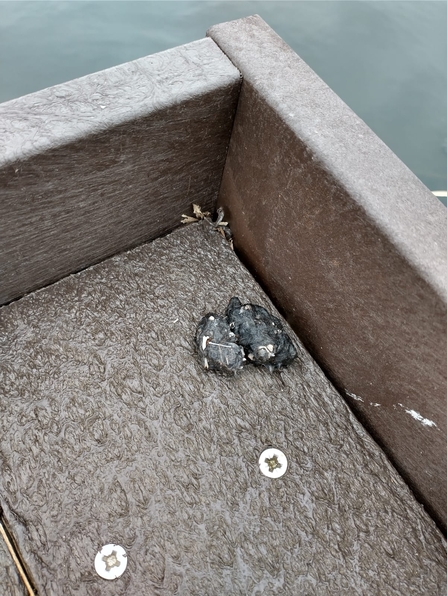
Owl pellet at Carlton Marshes, Lewis Yates.
You may recall that over the past few weeks we’ve been enjoying watching a very bold heron, who seems unfazed by getting close to our visitors. Lewis got this lovely photo of the heron near the visitor centre. We wonder if he’s vying for the place of the marsh harrier in the Carlton Marshes sign!
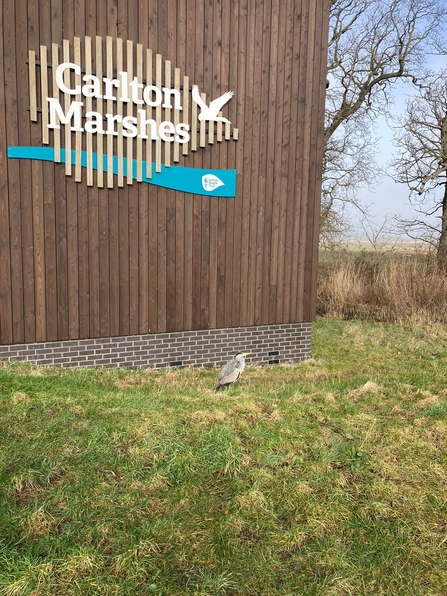
Bold heron at Carlton Marshes, Lewis Yates
North East Suffolk sites manager Matt Gooch has been monitoring and controlling the water levels at Carlton Marshes. The aim is to expose bare ground and muddy edges to attract breeding waders this spring. This habitat should provide plenty of invertebrate prey for potential wader chicks.
At Peto’s Marsh on the islands that were renovated in the autumn of last year, the lapwings are already giving their seal of approval by nesting early this year. Thanks to Andrew Easton for the lovely lapwing photo.
We’ve had some more heavy machinery at Carlton Marshes this week to install water pipes and a motorbike parking section. The water pipes have been laid underground to supply water to the top field currently being conservation grazed by a mixed herd of ponies, and the motorbike parking comes after many requests from visitors for a dedicated area.
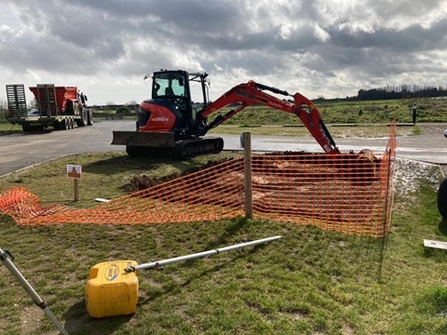
Credit Matt Gooch
Darsham Marshes
The butterflies are emerging! Dan Doughty spotted his first comma butterfly of the year, as well as brimstone butterflies and peacock on the wing.
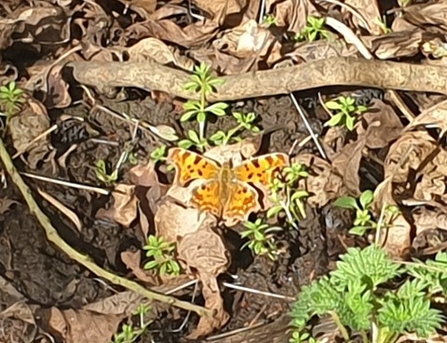
Credit Dan Doughty
Gunton Warren
Lewis found an amazing Minotaur beetle at Gunton Warren while the team were clearing some invasive Rhododendron. No further clearing will take place now due to the nesting season. The beetles are found on sandy grassland and heathland, where they feed on rabbit droppings and other dung, often at night.
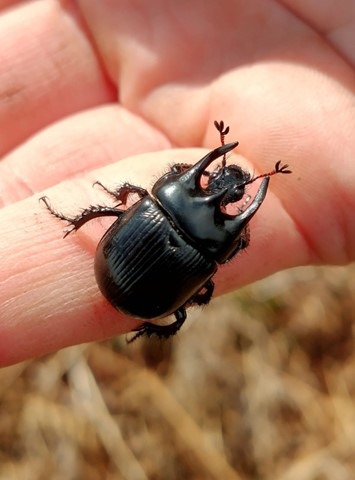
Credit Lewis Yates
Newbourne Springs
Ella Broom found some fabulous jelly-ear fungus growing on some elder at Newbourne Springs. There's no doubt as to the suitability of its name! In past times, it was used as a remedy for sore throats, sore eyes and jaundice!
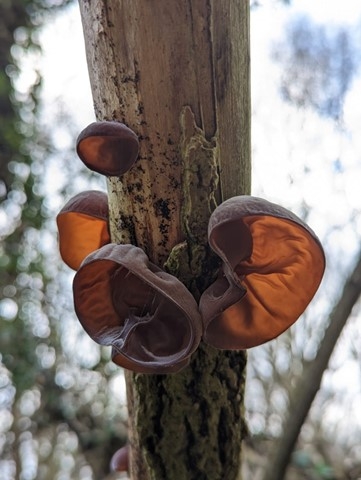
Credit Ella Broom
Rachel Norman and Ella also saw a species of solitary mining bee – Andrena bicolor – busily excavating a burrow in the soft, sandy soil.
Trimley Marshes
Warden Joe Underwood was sent some amazing pictures of boxing brown hares taken by photographer Stephen Harper. Stephen will be doing a webinar for us about his brown hare photography next year – keep an eye on our What’s On pages for more details later on!
Rowan Tomsett explains more about why hares box:
“Brown hares (Lepus europaeus) are often seen boxing energetically in the springtime - known colloquially as ‘mad March hares’. This behaviour, rather than being something between competing males, is often instigated by the female hare, the doe.
Once a doe has had enough of the zealous pursuit of a buck (male), she will turn round and fend him off. This behaviour is best seen in open grassy areas and arable fields, where there are woodland and scrubby edges nearby for shelter. There is such a spectacle in March in particular, not only due to it being well into their mating season, but also because crops and grass are at short height making the behaviour more visible.
Unfortunately, brown hares have declined by over 80% in the last century, due in part to intensive agricultural practices, one of the reasons why Suffolk Wildlife Trust work closely with farmers and landowners to encourage more wildlife-friendly land use, making sure these creatures are of 'fighting fit' status in the future!
(Source for decline stat: Brown Hare History & Status – The Hare Preservation Trust)”
Rowan also spotted some cigar gall on common reed (Phragmites australis), which is formed by Lipara lucens, a species of Frit Fly.
“Female adults of this species lay their eggs in reed stems. Once the egg has hatched, the larva bites into the stem, which then disrupts the plant's hormones, causing the formation of a gall.
The larva feeds inside the gall during the growing season, eventually pupating and emerging as an adult fly a year later.
Interestingly, a number of different invertebrates can use the gall (and its contents) at the same time as (or after) Lipara lucens larvae. For example, a species of dung fly, Cnemopogon apicalis, is known to predate the larva and lay its eggs in the newly-vacant gall.
Stenomalina liparae, a parasitic wasp, goes one step further and lays its eggs in the larva itself!
A somewhat more passive interaction comes from the species of masked bee Hylaeus pectoralis (Reed Yellow-face bee). It is known to use old cigar galls as a nest site.”
A huge thank you and well done to the Trimley Volunteer team, who have completed at least 250m of replacement livestock fencing this winter. Pictured are Paul, winding up the old wire, and Judith and Phil clearing ready for the bottom line.
Lackford Lakes
The eagle-eyed Joe Bell-Tye has spotted some miniature wonders at Lackford Lakes - balloonwort (a winter annual, appearing in autumn and dying in spring) and common whitlowgrass...
The Lackford team have been rotavating some ground disturbance plots on the Breckland fields at Lackford Lakes. This is to create and maintain bare ground to encourage the growth of some of the rarer Breckland plant species as well as providing breeding areas for stone curlew.
Black Bourn Valley
Linsey Gray has been enjoying the spring flowers at the reserve, and was pleased to see this single cowslip in bloom, but the rest are not far behind!
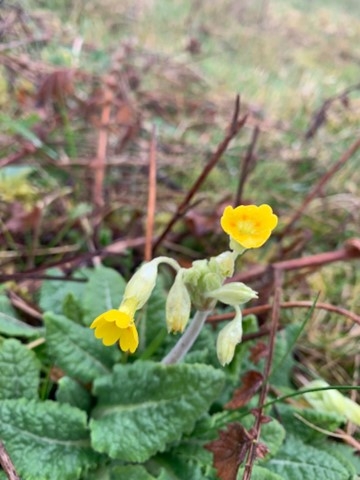
Credit Linsey Gray
Bradfield Woods
Anneke Emery has sent in some amazing camera trap footage of badgers at Bradfield Wood – they really are characters! One has left muddy nose marks all over the camera and smeared the lens nicely!
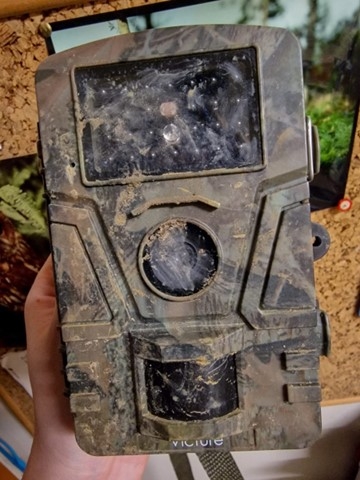
Credit Anneke Emery
Badger and friends at Bradfield Woods
Also at Bradfield Woods, we’ve been milling – making way marker posts and gate posts from the woods, as well as other Suffolk Wildlife Trust reserves around the county.
Arger Fen and Spouses Vale
Joe Bell-Tye heard and saw a raven ‘cronking’ over the reserve. We don’t see enough of these majestic birds in our county, but we very much hope that they will increase in numbers. Lindsey Gray has taken a lovely set of photos of the spring flowers and plants really coming into their own at the reserve...


